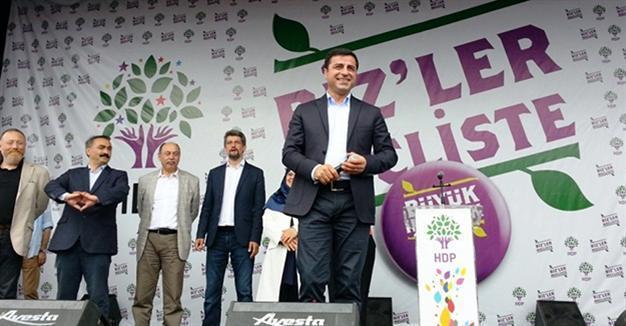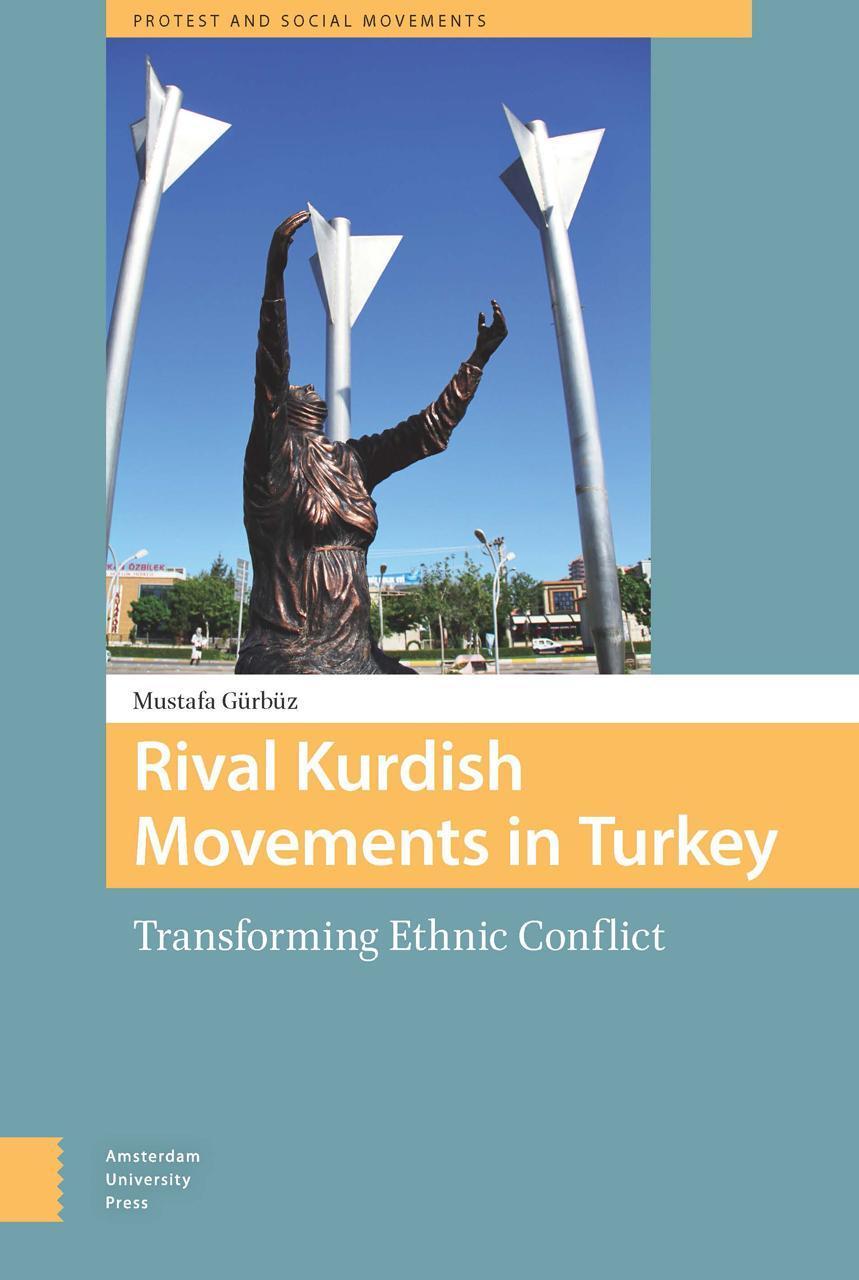Rival Kurdish movements in Turkey
William Armstrong - william.armstrong@hdn.com.tr

HDP Co-Chair Selahattin Demirtaş at a public rally on the day after the pro-Kurdish party’s unprecedented performance in the June 2015 general election.
‘Rival Kurdish Movements in Turkey: Transforming Ethnic Conflict’ by Mustafa Gurbuz (Amsterdam University Press, 206 pages, $99)In June 2004 the Kurdistan Workers’ Party (PKK) returned to its insurgency against the Turkish state, ending a five-year ceasefire. The ceasefire had been declared after the arrest of PKK head Abdullah Öcalan in 1999, and the next few years passed largely without violence. Popular theories about why the PKK returned to arms ranged from nationalist criticism of the ruling Justice and Development Party’s (AKP) EU-demanded reforms to conspiracy theories about U.S.-inspired Kurdish separatism after the invasion of Iraq.

It now seems clear that the PKK’s ending of the ceasefire was largely a result of internal factional squabbling. In May 2004, a number of high-ranking commanders split from the PKK, criticizing its authoritarian culture and blind submission to Öcalan. Facing internal challenges and the AKP’s growing electoral appeal among Kurds, the PKK likely returned to fighting in a bid to save its organizational strength and reputation. Some observers claimed that the radicalization of the PKK - despite government reforms (however incomplete) and a tangible improvement in the atmosphere – discredited the notion that democratization is the coffin of revolutionary movements.
The idea that conflict is shaped and changed by internal dynamics is central to “Rival Kurdish Movements” by Mustafa Gurbuz, a policy fellow at George Mason University and adjunct lecturer at the American University in Washington DC. The book examines the process of how civil society competition between various Kurdish actors can transform seemingly intractable violent conflict into civic politics. It is based on a variation of political moderation theory, showing how radicals gradually moderate if space in the civic sphere is widened and they are allowed to operate within the legal and electoral system. That may not have been the case back in 2004, but it is probably quite watertight as a general rule.
Once civic engagement starts, the preoccupations of Kurdish actors also change. The book charts how the pressure of having to engage with the public in the non-violent sphere has transformed the message and actions of various players. For those affiliated with the PKK – ideologically committed to secular Marxist ethnic nationalism - this has meant a tentative embrace of religion. Threatened by the pro-Islamic AKP’s electoral appeal and vulnerable to rhetorical attacks from the Islamist right, Kurdish ethno-nationalists started to construct a new public image at peace with Islam. Kurdish imams gave speeches at pro-Kurdish party rallies and Öcalan himself started to place an emphasis on Islamic themes in his public remarks.
It also cuts the other way. Religious groups in the southeast have felt pressure to emphasize the Kurdishness of their Islamic identity. “Pro-Islamic activists have increasingly become ethno-nationalist under the forces of civil society competition,” Gurbuz writes. Groups derived from the outlawed militant Kurdish religious group Hizbullah, responsible for hundreds of brutal deaths in the 1990s, have taken tentative steps in the legitimate political sphere in recent years. This process has necessitated a degree of moderation and a demand to appeal to ethnic consciousness. While they once praised more militant non-Kurdish Islamic figures, Hizbullah-linked activists have increasingly presented Sunni theologian Said Nursi (1877-1960) as an inspirational leader - particularly emphasizing his Kurdishness (unlike the fellow Nursi-inspired Gülen movement).
Across the board, “Conflict transformation has been underway as Kurdish, Islamic, and ethnic identities blur,” Gurbuz writes, describing this as a process of “harmonizing ideology and pragmatic politics.” Hardline activists may find their interests are best served by “constructing a non-violent competition culture for the sake of garnering material as well as symbolic resources such as legitimacy, reputation, and prestige.”
You might say that the current state of violent unrest in the southeast discredits this thesis. After a promising period of political relaxation, some Kurdish activists have radicalized further. Young urban-based Kurdish militants have been described as a “
Mad Max generation,” implacable and uninterested in political compromise. But perhaps this only underlines the importance of empowering moderates at the expense of hardliners before it’s too late. Amid reports that the Turkish government is preparing to close the Peoples’ Democratic Party (HDP) and lift the immunity of its deputies, the opposite seems to be happening.
“Rival Kurdish Movements” is very technical and probably not one for the general reader (just look at the price tag). But it’s full of useful insights at a time when towns across Turkey’s southeast are once again shaken by violence.
*Follow the Turkey Book Talk podcast via iTunes here, Stitcher here, Podbean here, or Facebook here.

 It now seems clear that the PKK’s ending of the ceasefire was largely a result of internal factional squabbling. In May 2004, a number of high-ranking commanders split from the PKK, criticizing its authoritarian culture and blind submission to Öcalan. Facing internal challenges and the AKP’s growing electoral appeal among Kurds, the PKK likely returned to fighting in a bid to save its organizational strength and reputation. Some observers claimed that the radicalization of the PKK - despite government reforms (however incomplete) and a tangible improvement in the atmosphere – discredited the notion that democratization is the coffin of revolutionary movements.
It now seems clear that the PKK’s ending of the ceasefire was largely a result of internal factional squabbling. In May 2004, a number of high-ranking commanders split from the PKK, criticizing its authoritarian culture and blind submission to Öcalan. Facing internal challenges and the AKP’s growing electoral appeal among Kurds, the PKK likely returned to fighting in a bid to save its organizational strength and reputation. Some observers claimed that the radicalization of the PKK - despite government reforms (however incomplete) and a tangible improvement in the atmosphere – discredited the notion that democratization is the coffin of revolutionary movements.